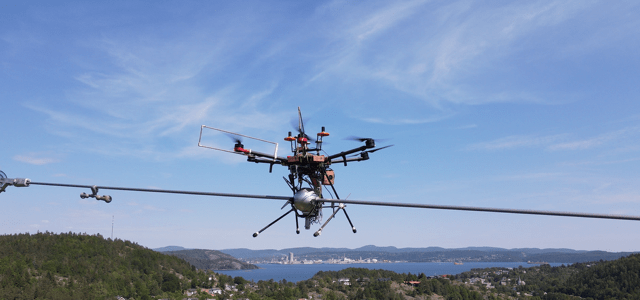Drones Install Powerline Sensors in Seconds as Heimdall Power Aims to Meet U.S. Grid Compliance
As electricity demand rises and government regulations take effect, U.S. utilities are turning to innovative solutions to upgrade their grids. Heimdall Power has introduced a new plan that uses drones to install powerline sensors, helping utilities meet upcoming requirements faster and more efficiently.


Heimdall Power’s Solution to FERC 881 Compliance
On October 10, 2024, Heimdall Power unveiled its strategy to assist U.S. utilities in meeting the Federal Energy Regulatory Commission (FERC) 881 mandate. The company offers a solution to install thousands of its Neuron sensors—also known as “Magic Balls”—on high-voltage power lines. This allows utilities to achieve Dynamic Line Ratings (DLR), which provide real-time transmission data beyond the FERC-required Ambient Adjusted Ratings (AAR). With just ten months remaining until the July 2025 deadline, the company’s plan ensures that utilities can comply with the new regulations in as little as two weeks.
“The upcoming FERC 881 order is merely the first domino to fall in a slew of upcoming enhancements that utilities will need to make to keep up with the increasing demand for electricity,” said Jørgen Festervoll, CEO of Heimdall Power.
The Benefits of Neuron Sensors
Heimdall Power’s Neuron sensors collect essential data, including temperature, weather conditions, and power line angles, which influence the capacity of the grid. These sensors provide real-time information, enabling utilities to optimize the power they can safely transmit across their networks.
In addition to meeting regulatory requirements, Heimdall Power’s Neuron sensors help utilities prepare for the future. By installing these sensors, utilities can increase their transmission capacity and avoid lengthy and costly infrastructure projects. Heimdall Power reports that their technology can unlock up to 40% more capacity from existing grids.
“The good news is that this regulation is prompting companies to consider how they can use technology to unlock transmission capacity they’ve never been able to access,” Festervoll added.
Drone Installation Revolutionizes Grid Upgrades
One of the key aspects of Heimdall Power’s approach is the use of drones for sensor installation. Traditionally, installing sensors would require teams of six linemen working manually on power lines. Heimdall Power’s drone-based system allows a two-person crew to install each Neuron sensor in under 15 seconds, dramatically speeding up the process.
The company estimates that its 20 drone crews can install up to 800 sensors per week. For utilities that require 1,600 or fewer sensors, this translates to full installation within two weeks, enabling them to meet and exceed FERC 881 standards.
Setting the Stage for Dynamic Line Ratings
Heimdall Power’s solution goes beyond short-term regulatory compliance. By providing utilities with the technology needed for Dynamic Line Ratings, the company sets the foundation for future energy transmission needs. While FERC 881 requires only hourly or weekly measurements, real-time data will become increasingly important as energy demand continues to grow. Dynamic Line Ratings allow utilities to respond quickly to stressors and unlock additional capacity from their grids.
Heimdall Power has already demonstrated success in this area. Recently, the company was invited to the White House after helping Great River Energy increase its transmission capacity by 42.8%. This project, which spans Minnesota, Wisconsin, and North Dakota, is the largest grid-optimization initiative in the U.S. to date.
With their innovative approach to grid enhancement, Heimdall Power offers U.S. utilities a path to compliance with FERC 881 regulations and a forward-looking solution for future energy demands. By using drones to quickly install Neuron sensors, utilities can unlock significant capacity in their existing grids, paving the way for Dynamic Line Ratings and greater efficiency.
As Festervoll emphasized, “Those that view this moment as an opportunity to lay the foundation for dynamic line ratings can increase their transmission capacity by a significant margin–and avoid the years-long infrastructure projects that once seemed like the only option.”
Read more:


